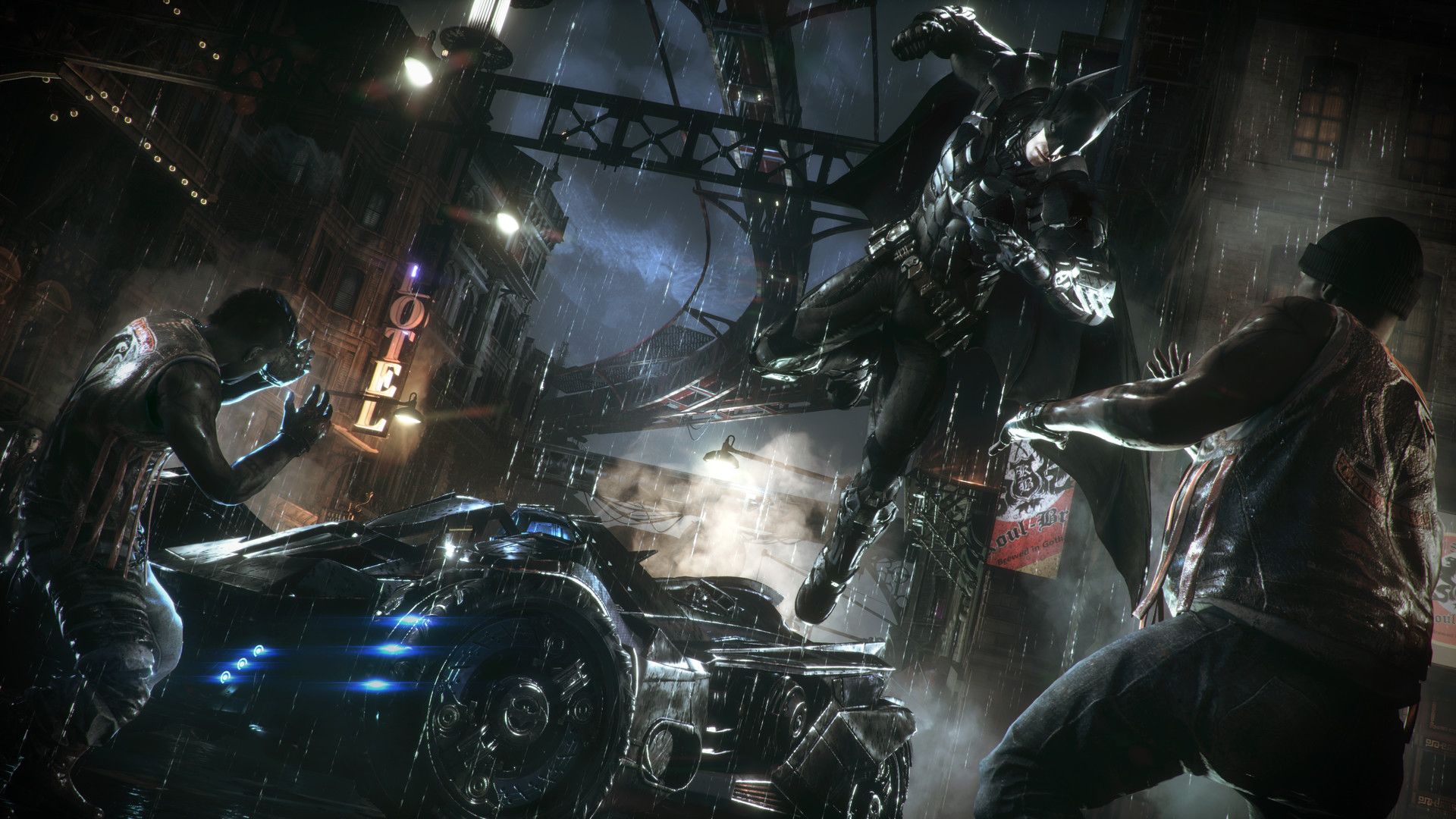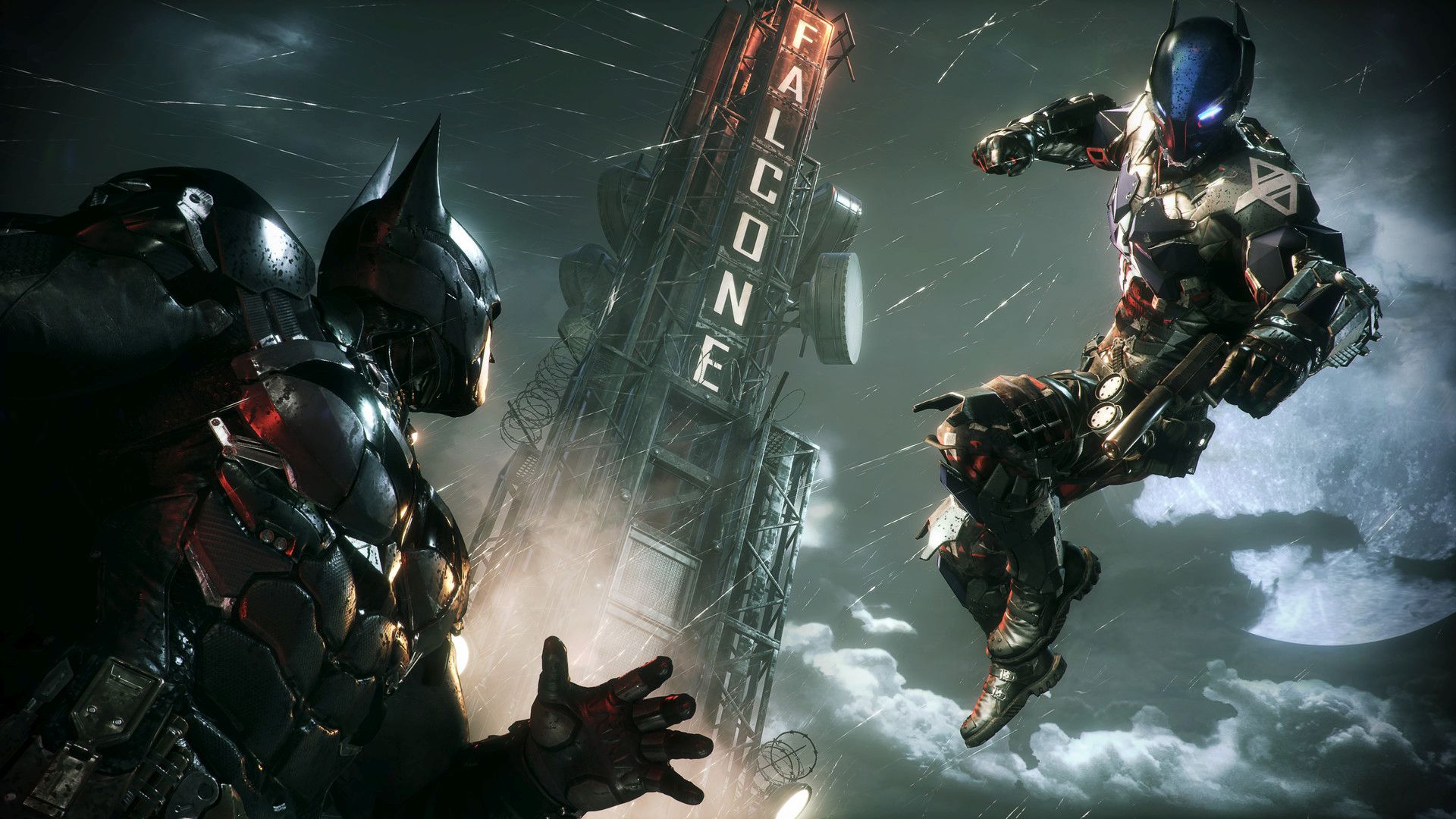Batman: Arkham Knight is Absolutely Worth Playing in 2025
The Batman. It’s impressive how, after all these decades – all the reboots, spin-offs, changing identities (poor Commissioner Gordon) and crossovers – the name still inspires some reverence and awe. Matching that is difficult, but when Rocksteady released Batman: Arkham Asylum in 2009 and followed it up with the even more incredible Arkham City in 2011, it became a franchise to reckon with. One which guaranteed a certain caliber of gaming that few other titles could replicate, simply because they understood the essence of what made Batman, The Batman.
And then Batman: Arkham Knight came along.
Launching on June 23rd, 2015, after extensive hype, it would seemingly offer a thunderous conclusion to the trilogy (and yes, trilogy because, for better or worse, Arkham Origins never gets its due). Previous titles exposed Batman’s never-say-die attitude and incredible detective skills, but this one stacked the gauntlet in a way that exposed his desperation. Maybe the Dark Knight wouldn’t come out of this in one piece. Maybe this really was the Knight’s End.
[embedded content]
It seemed like the perfect recipe for a finale, especially with the Arkham Knight providing a suitable counter to Batman’s prowess. Gotham City presented a slick new open-world playground to explore, one teeming with new Riddler challenges, villains to nab, and unsuspecting crooks to divebomb on mid-dialogue. There was also the Batmobile, and who wouldn’t love tearing through the streets, targeting enemy vehicles and wrecking them (non-lethally) before engaging in some friendly interrogation? Did we mention how incredible everything looked? Even by today’s standards (and by those of more recent DC games, which we’ll get to), it looks absolutely phenomenal in pretty much every aspect.
In its endeavor to go a little too large with the sequel, Rocksteady introduced some rather annoying wrinkles. Which we’ll get into but ten years on, Batman: Arkham Knight is still an incredible open-world experience and one of the better superhero games out there, even if it kind of fumbled the climax. No major story spoilers, so don’t worry if you’ve never played it.
The events of Arkham City would make Gotham City much safer, but it’s not long before Scarecrow, missing since Arkham Asylum, would unleash a new spread of Fear Toxin. Batman quickly enters the fray, venturing to where it all began – Ace Chemicals. And then his world is turned upside down. Confronted by a new villain, the Arkham Knight, leading a group of mercenaries and working with Scarecrow, Batman has to deal with the kidnapping of Barbara Gordon, aka Oracle and a larger plan to infect the city. Then there’s the matter of the Joker, whose infected blood is turning a small group of patients into his successors.
There are some pretty high stakes, and Rocksteady offers up some pretty cool set pieces, but the overall narrative sags in places, especially when it comes to the Arkham Knight. Given the circumstances of his history with Batman, you would think that a proper battle would be in the offing, but it’s an anticlimactic series of takedowns while sneaking past his shots.
Then there’s the other elephant in the room – the Batmobile. Yes, it was cool when engaging in high-speed chases and even in some puzzles, but there were also the annoying tank missions, where you had to take down waves and waves of enemy vehicles. It was repetitive, and even if you still had missions where Batman stealthily took down a base’s opposition, destroying 20 militia checkpoints was simply too much to ask.
With those negatives out of the way, let’s talk about the many positives. The Free Flow Combat is still as robust as ever – countering and dodging is still fluid and responsive; finishers are hard-hitting and crunchy. Building up your combo and systematically dismantling a group of enemies never gets old, even if the variety of threats isn’t massively expanded over the previous games. One of the cooler new additions is Dual Play – it allowed for temporarily controlling the likes of Robin, Catwoman and Nightwing. You could even perform stylish dual takedowns. The only downside is that it’s only available in select points, and they’re not nearly as plentiful throughout the story. Stealth also remained as excellent as ever, with new options like imitating Harley Quinn’s voice with the Voice Synthesizer to lure enemies and pounce on them.
Regardless, it’s such a refined and well-done combat system that WB Games Montreal’s Gotham Knights looks downright sickening in comparison. Suicide Squad: Kill the Justice League incorporated a counter-shot mechanic but still leaned heavily on looter mechanics, “traversal skills” and unimaginative live-service objectives.
While there’s plenty to dislike about certain open-world activities in Arkham Knight, the Most Wanted system did open up a fresh variety of cases and villains for Batman to hunt down. The Perfect Crime is investigation-heavy and leads to a battle with one of the Dark Knight’s more disturbing villains. There are Riddler challenges to complete and Trophies to earn, and though it was an excuse to shoehorn more Batmobile segments, at least these were more focused on racing than combat. Other notable villains – and antiheroes – from the franchise also make their debut, presenting some interesting new stories and challenges.
The traversal also remained as incredible as ever – chaining grapples and glides just felt so intuitive and right, making the Batmobile stick out like a sore thumb all the more. Perhaps the biggest point of contention for most players is having to achieve 100 percent for the true ending, which only raises more questions than answers. Then again, with how Kill the Justice League followed up, I would have preferred if they went unanswered.
As good as the base game could be, the DLC didn’t quite hit the mark. Playing as Batgirl in a story set before Arkham Asylum? Good, save for the crashing issues. Controlling Harley Quinn as she battles against Blüdhaven’s cops? Decent if it didn’t last 30 minutes (and the Red Hood Story Pack is even shorter). Catwoman’s Revenge? A Flip of a Coin, which saw Robin taking on Two-Face? Bad, plain and simple. At least the Season of Infamy added multiple new missions and villains like Mr. Freeze, The Mad Hatter, and Killer Croc, each with their own stories.
Batman: Arkham Knight was no stranger to controversy at launch. While the Xbox One and PS4 versions ran flawlessly, delivering a consistent 30 frames per second even with such detailed weather effects, character models, and environments, the PC version was an unmitigated disaster. Performance issues, crashes, bugs, a capped frame rate (which still dropped extensively) – the whole works. It was so bad that Warner Bros. Interactive Entertainment suspended sales a day after launch and even offered refunds. Months would pass, and even with significant patches, the PC version still had issues, but it would eventually get much better.
Even with all these caveats – the Batmobile, some of the story beats, the finale, etc – Batman: Arkham Knight is still an essential experience. There’s something about Rocksteady exploring all these different avenues for the iconic hero, attempting to expand on his mythos and journey while following up on its successor, one of the greatest games ever made. It may not nail everything perfectly – I would probably rate it an eight out of ten, all things considered – but it’s still incredibly fun. Together with Arkham Asylum and Arkham Knight, this is one of the greatest video game trilogies out there.
Note: The views expressed in this article are those of the author and do not necessarily represent the views of, and should not be attributed to, GamingBolt as an organization.




Comments are closed.